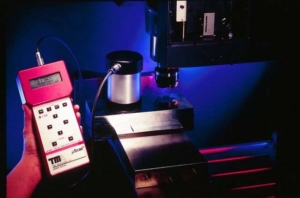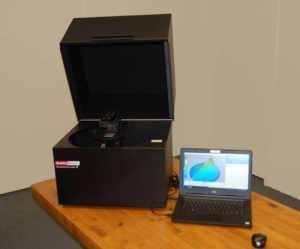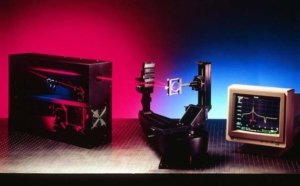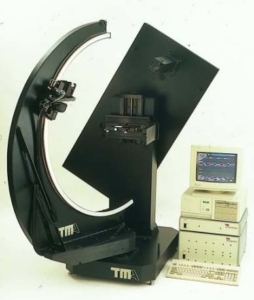Scatterometer Overview
An Overview of Scatterometers Available from TSW The following instruments are offered for sale by The Scatter Works, Inc (TSW). They vary greatly in both price and capability. User choices need to be dictated by user requirements. For example, all of the instruments can be purchased with different wavelength sources. This document is only an overview, but will help you narrow the search.
They are organized roughly in order of increasing price and capability. Use the summary chart on the next page. Call or email TSW to get more detailed information and/or quotes.
 The MicroScan is a simple single diode laser three detector scatterometer manufactured by TSW. The system measures specular reflectance at an incident angle of 25 degrees and scattered light at angles of 0 and -50 degrees. Under the assumptions that the surface is optically smooth and isotropic values of the rms roughness from 0.01 to 1.0 Um-1 is reported in addition to the associated TIS. The noise floor is about 10-5/sr. It has been used to monitor the aging of large optics. The price is $9,000.
The MicroScan is a simple single diode laser three detector scatterometer manufactured by TSW. The system measures specular reflectance at an incident angle of 25 degrees and scattered light at angles of 0 and -50 degrees. Under the assumptions that the surface is optically smooth and isotropic values of the rms roughness from 0.01 to 1.0 Um-1 is reported in addition to the associated TIS. The noise floor is about 10-5/sr. It has been used to monitor the aging of large optics. The price is $9,000.
 The ScatterScope4 is a table top instrument manufactured by ScatterMaster LLC in Tucson AZ. It uses multiple silicon detectors that scan 180 degrees to measure hemispherical and incident plane scatter in both reflection and transmission. It can be equipped with as many as three laser diode sources. It does not measure close to the specular beam and the noise floor is limited to the 10-5/sr to 10-6/sr range. It’s huge advantages are speed (15- 20 seconds per scan) and ease of use. Operators can be trained in a few minutes. It is an ideal instrument for the lighting industry. A single red laser system is priced at about $55,000. An RGB system is closer to $100,000. Call for quotes.
The ScatterScope4 is a table top instrument manufactured by ScatterMaster LLC in Tucson AZ. It uses multiple silicon detectors that scan 180 degrees to measure hemispherical and incident plane scatter in both reflection and transmission. It can be equipped with as many as three laser diode sources. It does not measure close to the specular beam and the noise floor is limited to the 10-5/sr to 10-6/sr range. It’s huge advantages are speed (15- 20 seconds per scan) and ease of use. Operators can be trained in a few minutes. It is an ideal instrument for the lighting industry. A single red laser system is priced at about $55,000. An RGB system is closer to $100,000. Call for quotes.
The CASI Scatterometer (below left) is a TSW research instrument that can be configured with multiple laser sources ranging from the near UV to the mid-IR. It uses programmable collection apertures and step sizes to allow measurements within 0.1 degrees from the specular beam and it has a noise floor of about 10-8/sr in the visible, which is limited by scatter from air molecules. It takes a linear incident plane scan at a programmable incident angle. It requires a lab with an optical table (not supplied) and benefits from hepa filter air flow for some applications. Operator training takes about a week. A single red laser system costs $190,000.


The TASC Scatterometer above right is essentially a CASI that takes hemispherical measurements with manually changed apertures. UV, visible, mid-IR and broadband systems have been built. A single red laser system is $250,000.
